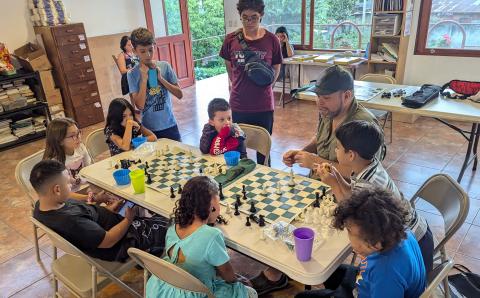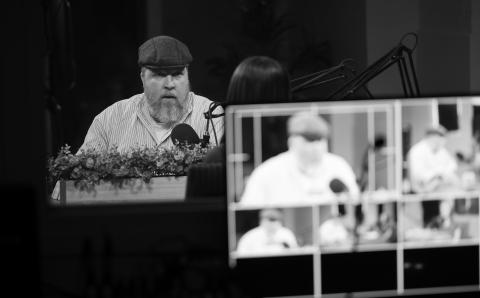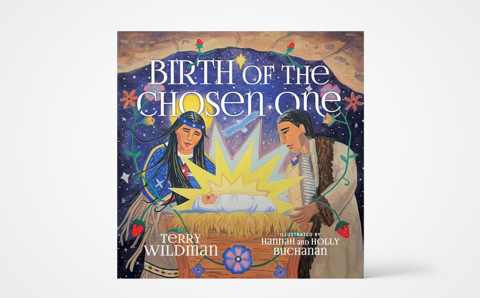Is God with us? This is perhaps the greatest question we face. It is often a question born out of our deepest pathos: at the bedside of our dying loved one, as the dust settles from an earthquake, or when we get a late-night call about a car accident.
Some might ask whether God even exists. But for the vast majority of humanity, the biggest life question is not whether God exists (in some form), but whether God is fundamentally oriented toward us.
“Is God with us?” is a defining question in the book of Ezekiel—yes, Ezekiel, the eccentric prophet who found himself on the banks of the Kebar River having visions of winged and wheeled cherubim covered with eyes, the same enigmatic figure who dug a hole through the wall of his house, lay on one side for 390 days, and didn’t shed a tear when his wife died. This same Ezekiel struggled with the question “Is God with us?”
Ezekiel found himself exiled to Babylon at the beginning of several decades’ worth of clashes between the tiny nation of Judah and the mighty Babylonian Empire. While Ezekiel was living in Babylon, these clashes came to a head with the destruction of Jerusalem and its temple, the conquest of Judah, and the deportation of its remaining residents in 587 B.C.
These cataclysms touched Ezekiel personally, but it is clear from Ezekiel’s prophecies that his biggest concern wasn’t his own situation. Instead, he worried whether God had abandoned his chosen people because of their sins of idolatry and injustice.
In chapter 10, Ezekiel has a vision of God’s glory departing from the Jerusalem temple. This was the same glory that moved with God’s people throughout their wandering in the wilderness in Exodus. It was the same glory that entered the temple as it was dedicated by Solomon (2 Chron. 7). God’s glory in the temple had been an irrefutable sign that God was with the people of Israel in all their successes and failures.
Ezekiel’s vision was an end to that. Confirmation of Ezekiel’s vision happened when the Babylonian army pillaged and demolished the temple (Jer. 52:4-30). God had indeed left the building.
Though not many of us have been despoiled and exiled by war and famine, most of us have felt a sense of aloneness that occasions our asking if God is with us. Perhaps we feel it in our family, where a tense silence reigns in place of glowing love. Perhaps that is where some of us are collectively. It has been so long since we’ve felt the warmth of God’s presence in our communal worship and ministry.
There’s good news, friends. In Advent we are reminded that God is indeed fundamentally oriented toward us. God became flesh and made his home among us. Christ has come.
Ezekiel’s story ends on the shores of the Kebar River with a final vision in the 25th year of his exile (the 14th year after Jerusalem’s destruction). In that vision, Ezekiel sees a new temple dedicated to the pure worship of the Lord. Into that new temple the glory of the Lord enters and overflows, turning into a life-giving and nourishing river (Ezek. 43).
And what is the name of the city where that temple has been built? “THE LORD IS THERE” (Ezek. 48:35).
Brothers and sisters in Christ, may God bless you with his overflowing presence this Advent season. God is indeed with us.
About the Author
Rev. Zachary King is the general secretary of the CRCNA. He is a member of Cascade Fellowship Christian Reformed Church in Grand Rapids, Mich.









